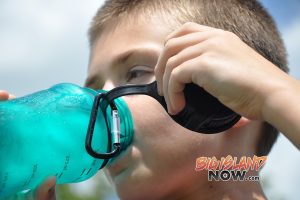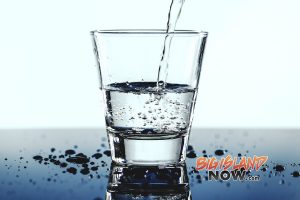Is Hawai‘i’s Drinking Water Safe?
 Concern about water pollution is at an all-time high in America. In fact, 63% of Americans are worried “a great deal about the pollution of drinking water”—and rightfully so.
Concern about water pollution is at an all-time high in America. In fact, 63% of Americans are worried “a great deal about the pollution of drinking water”—and rightfully so.
Our nations drinking water contains over 250 contaminants, 160 of which are not regulated, meaning there is no limit on what level is considered to be acceptable. The Environmental Working Group (EWG) found 44 contaminants in Hawai‘i’s water supply and 10 of those were above either health or legal limits.
“The report states that 10 contaminants were found in Hawai‘i above health guidelines,” the Hawai‘i Department of Health explained. “The guidelines listed are primarily from the California Office of Environmental Health Hazard Assessment and are lower than the Environmental Protection Agency’s Maximum Contaminant Levels.”
“Hawai‘i follows the federal MCLs set forth by the EPA, as the legal limit,” stated Joanna Seto of the DOH. “The MCL is the concentration of a contaminant that is safe to drink over a lifetime of consumption. None of the contaminants found in Hawai‘i were above the legal limits.”
The contaminants that were above health guidelines included chromium, bromoform, total trihalomethanes (TTHMs), 1,2,3-trichloropropane, chlordane, vanadium, dibromochloromethane, 1,2-Dibromo-3-chloropropane (DBCP), chloroform and bromodichloromethane.
Seto stated, “Of the 10 contaminants, seven have federal MCLs or are part of a group of contaminants (such as total trihalomethanes) that have an MCL. The State of Hawai‘i has set its own MCL for 1,2,3-trichloropropane and EPA is working on setting MCLs for chromium (hexavalent) and vanadium.”
Health concerns associated with these contaminants include cancer, harm to the liver, harm to the reproductive system, change to fetal growth and development, harm to child development, bladder cancer, skin cancer, hormone disruption, change in blood chemistry, testicular cancer and infertility.
In addition, baseline water quality sampling on the Big Island found highly elevated nitrogen concentrations as well as positive detection of laundry fabric brighteners, which the EPA warns may cause developmental and reproductive problems in humans.
 Another cause for concern is the fact that Hawai‘i now has 88,000 cesspools that deposit 53 million gallons of raw sewage into the ground every day—more than any state in America. There are 49,300 on Big Island alone.
Another cause for concern is the fact that Hawai‘i now has 88,000 cesspools that deposit 53 million gallons of raw sewage into the ground every day—more than any state in America. There are 49,300 on Big Island alone.
According to the DOH, “There were four areas identified as Priority Level 2 – Potential to impact drinking water and 3 – Potential impacts to sensitive waters: Kea‘au – Level 2 with 9,300 cesspools; Hilo Bay – Level 3 with 8,700 cesspools; Puako – Level 3 with 150 cesspools; and Kapoho – Level 3 with 220 cesspools.”
It is estimated that replacing all of these cesspools could cost around $1.75 billion.
The state is also concerned about the fact that 90% of the states drinking water comes from groundwater which could be contaminated with pathogens and pollutants from these cesspools.
The DOH is concerned that these cesspools are also elevating nitrate levels in drinking water. They are estimating that some parts of the aquifer are already over the legal limit of 10 milligrams per liter.
While the state is working to monitor contaminants at five entry points to the water distribution system, those who live off catchment are responsible for monitoring their own water.
Drinking water now might soon contain fluoride as lawmakers push to add the substance for the dental benefits.
However, the EPA has expressed concerns that long-term exposure to fluoride levels higher than 4.0 mg/L in drinking water can lead to skeletal fluorosis—weakened bones or fractures in older adults.
Also, the EPA has set unenforceable guidelines that caution that fluoride levels higher than 2.0 mg/L can prevent tooth enamel from developing normally in children, leading to staining or pitting of teeth. Another concerning study suggests that high levels of fluoride may be linked to memory loss caused by toxicity to brain and nerve cells.
While this may sound concerning, our water is considered drinkable, unlike Flint Michigan where water was declared unsafe to drink from April 25, 2014, to March 30, 2018. The EPA continues to warn residents that their lead contamination issue is likely unresolved.
















